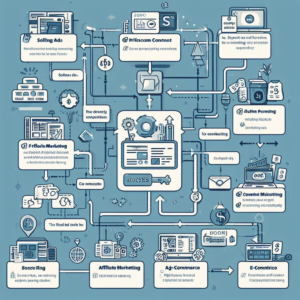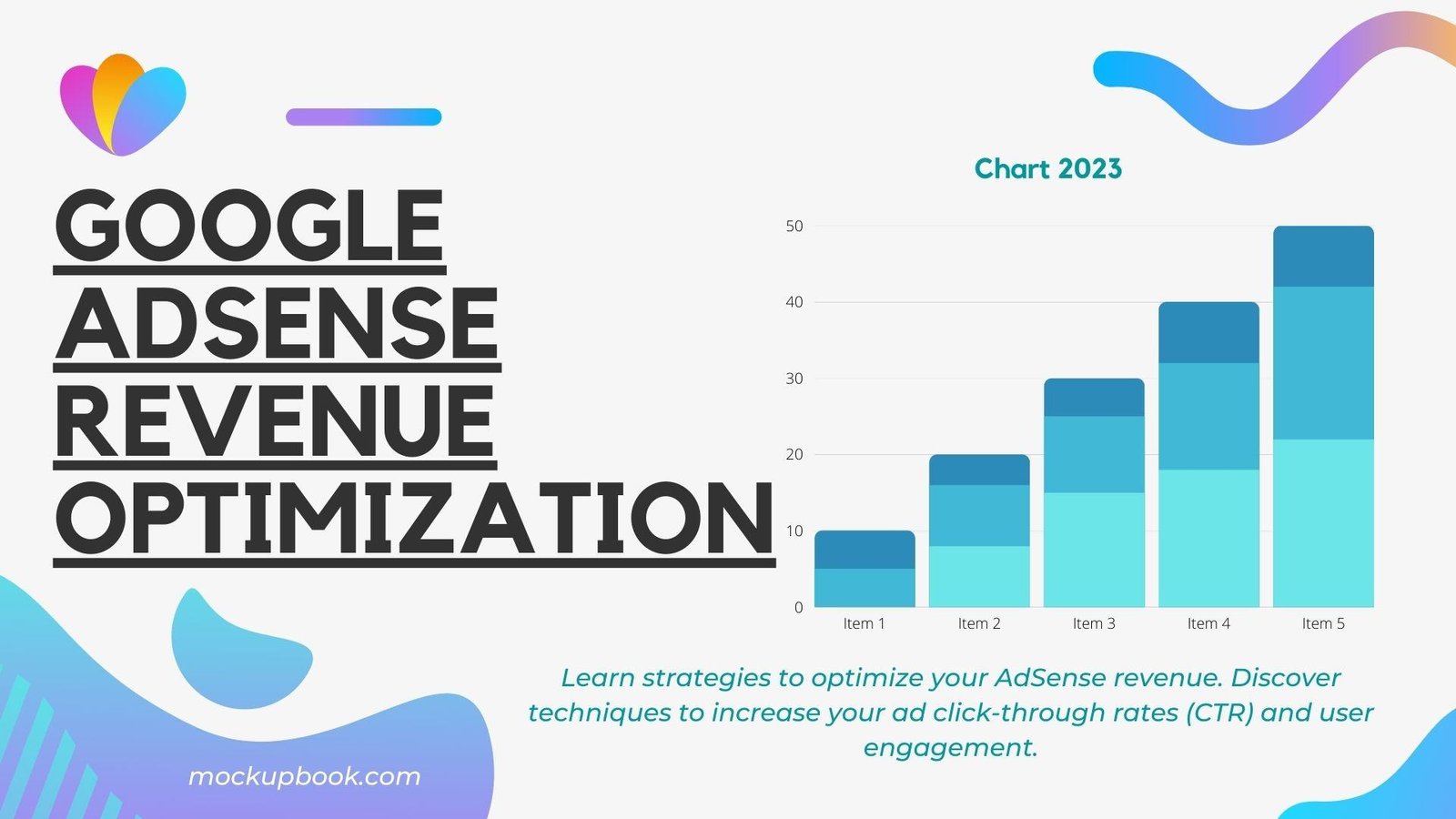If you have a website that attracts visitors, you might be wondering how to turn it into a source of income. There are many ways to monetize a website, depending on your niche, audience, content, and goals. In this article, we will explore some of the most popular and effective methods of website monetization, along with examples, steps, and tips. By the end of this article, you will have a better understanding of how to monetize your website and what to consider before choosing a strategy.

What is Website Monetization?
Website monetization is the process of generating revenue from your website. This can be done by displaying ads, selling products or services, accepting donations, creating memberships, or offering sponsored content. Website monetization can be a passive or active income source, depending on how much time and effort you invest in creating and maintaining your website.
Website monetization can have many benefits, such as:
- Providing a return on your investment for creating and hosting your website
- Allowing you to pursue your passion and share your expertise with others
- Giving you more freedom and flexibility to work on your own terms
- Creating a loyal and engaged community around your website
- Building your reputation and authority in your niche
However, website monetization also comes with some challenges, such as:
- Finding the right monetization method that suits your website and audience
- Balancing the quality and quantity of your content with your revenue goals
- Maintaining your website’s performance, security, and user experience
- Complying with the rules and regulations of your monetization platform or partner
- Dealing with competition and changing market trends
Therefore, before you decide to monetize your website, you should have a clear vision of what you want to achieve, how much you are willing to invest, and what are the potential risks and rewards.
How to Choose a Website Monetization Method
There is no one-size-fits-all solution for website monetization. The best method for your website depends on several factors, such as:
- Your website’s niche, topic, and content type
- Your website’s traffic, demographics, and engagement metrics
- Your website’s design, layout, and functionality
- Your website’s goals, values, and mission
- Your personal preferences, skills, and resources
To choose a website monetization method, you should first analyze your website and your audience. You can use tools like Google Analytics, Google Search Console, or SimilarWeb to get insights into your website’s performance and user behavior. You can also use surveys, polls, or feedback forms to ask your visitors directly what they like, dislike, or expect from your website.
Based on your analysis, you should identify your website’s strengths, weaknesses, opportunities, and threats (SWOT). This will help you determine what kind of monetization method can enhance your website’s value proposition, address your website’s pain points, leverage your website’s competitive advantages, and mitigate your website’s potential risks.
Next, you should research and compare different monetization methods that are relevant to your website’s niche and audience.

You should consider the pros and cons of each method, such as:
- How much revenue can you expect to generate from each method?
- How much time and effort do you need to invest in each method?
- How easy or difficult is it to implement and manage each method?
- How compatible is each method with your website’s design and functionality?
- How does each method affect your website’s user experience and reputation?
- How stable and reliable is each method in the long term?
Finally, you should test and evaluate different monetization methods on your website. You can use tools like Google Optimize, Optimizely, or Visual Website Optimizer to run experiments and measure the impact of each method on your website’s key performance indicators (KPIs), such as:
- Page views, sessions, and bounce rate
- Click-through rate (CTR), conversion rate, and average order value (AOV)
- Revenue per thousand impressions (RPM), earnings per click (EPC), and cost per acquisition (CPA)
- User satisfaction, retention, and loyalty
Based on your results, you should choose the monetization method that maximizes your revenue while minimizing your costs and maintaining your website’s quality and integrity.
Website Monetization Methods
In this section, we will discuss some of the most common and effective website monetization methods, along with examples, steps, and tips. We will categorize them into four main types:
- Advertising
- Selling
- Donating
- Sponsoring
Advertising
Advertising is one of the most popular and easiest ways to monetize a website. Advertising involves displaying ads on your website, either from third-party platforms or from direct advertisers. You can earn money from advertising in two ways:
- Cost per mille (CPM): You get paid for every thousand impressions or views of an ad on your website
- Cost per click (CPC): You get paid for every click on an ad on your website
Advantages of advertising are:
- It is simple and quick to set up and use
- It does not require any upfront investment or inventory
- It can generate passive income without much maintenance
- It can work with any website niche, topic, or content type
Disadvantages of advertising are:
- It can lower your website’s aesthetic appeal and user experience
- It can distract your visitors from your website’s main content and purpose
- It can reduce your website’s credibility and trustworthiness
- It can be affected by ad blockers, click fraud, and low-quality ads
Best practices for advertising are:
- Choose the right ad platform or partner that matches your website’s niche and audience
- Choose the right ad format, size, and placement that blends well with your website’s design and functionality
- Choose the right ad frequency, density, and diversity that balances your revenue and user experience
- Choose the right ad quality, relevance, and value that enhances your website’s content and purpose
- Monitor and optimize your ad performance, revenue, and user feedback
The examples of advertising are:
- Google AdSense: The most popular and widely used ad platform that allows you to display text, image, video, or interactive ads on your website and earn money from CPM or CPC
- Media.net: A leading contextual ad network that allows you to display relevant and high-quality ads on your website and earn money from CPM or CPC
- Ezoic: A platform that uses artificial intelligence to optimize your ad revenue, user experience, and site speed
- BuySellAds: A marketplace that connects you with direct advertisers who want to display native, display, or sponsored ads on your website and pay you a fixed amount per month
Selling
Selling is another popular and effective way to monetize a website. Selling involves offering products or services on your website, either physical or digital. You can earn money from selling in two ways:
- E-commerce: You sell products directly to your customers on your website, either by yourself or through a third-party platform
- Digital products: You sell digital products, such as e-books, courses, software, or memberships, on your website
Advantages of selling are:
- It allows you to leverage your expertise, creativity, and passion
- It allows you to build a loyal and engaged customer base
- It allows you to control your pricing, branding, and marketing
- It allows you to diversify your revenue streams and reduce your dependence on ads
Disadvantages of selling are:
- It requires more time, effort, and investment than advertising
- It requires more skills, knowledge, and resources than advertising
- It requires more compliance, security, and logistics than advertising
- It requires more customer support, feedback, and reputation management than advertising
Best practices for selling are:
- Choose the right product or service that matches your website’s niche and audience
- Choose the right pricing strategy that balances your revenue and customer value
- Choose the right payment gateway that is secure, reliable, and user-friendly
- Choose the right fulfillment method that is fast, efficient, and cost-effective
- Monitor and optimize your sales performance, customer feedback, and market trends
The examples of selling are:
- Amazon Associates: A program that allows you to sell Amazon products on your website and earn a commission on each sale
- Shopify: A platform that allows you to create and manage your own e-commerce store on your website and sell your own products or drop-shipped products
- Gumroad: A platform that allows you to sell digital products, such as e-books, courses, software, or memberships, on your website and keep most of the revenue
- Patreon: A platform that allows you to offer exclusive content, perks, or access to your audience in exchange for a recurring payment
Donating
Donating is a less common but still viable way to monetize a website. Donating involves asking your visitors to contribute money to your website, either voluntarily or as a reward. You can earn money from donating in two ways:
- Crowdfunding: You ask your visitors to donate money to support your website or a specific project on your website, either through a crowdfunding platform or a donation button
- Membership: You ask your visitors to become members of your website and pay a subscription fee to access exclusive content or features
Advantages of donating are:
- It allows you to build a community of supporters and fans
- It allows you to fund your website without relying on ads or selling
- It allows you to express your values, causes, or missions
- It allows you to test your audience’s loyalty and generosity
Disadvantages of donating are:
- It requires a strong and compelling reason for your visitors to donate
- It requires a transparent and trustworthy relationship with your visitors
- It requires a clear and consistent communication with your visitors
- It requires a continuous and creative engagement with your visitors
Best practices for donating are:
- Choose the right crowdfunding platform or donation button that matches your website’s niche and audience
- Choose the right donation goal, amount, and frequency that motivates your visitors to donate
- Choose the right membership plan, benefits, and pricing that justifies your visitors to pay
- Choose the right donation message, story, and impact that resonates with your visitors
- Monitor and optimize your donation performance, feedback, and impact
The examples of donating are:
- Patreon: A platform that allows you to offer exclusive content, perks, or access to your audience in exchange for a recurring payment
- PayPal: A payment gateway that allows you to add a donation button to your website and receive donations from your visitors
- Kickstarter: A crowdfunding platform that allows you to launch a project on your website and receive pledges from your visitors
- GoFundMe: A crowdfunding platform that allows you to raise funds for a cause or a person on your website and receive donations from your visitors
Sponsoring
Sponsoring is a relatively new but promising way to monetize a website. Sponsoring involves partnering with a brand or a company that wants to reach your audience and paying you for promoting their products or services on your website. You can earn money from sponsoring in two ways:
- Sponsored content: You create or publish content on your website that promotes a brand or a product, either by yourself or through a sponsored content platform
- Influencer marketing: You use your influence and reputation on your website to endorse a brand or a product, either by yourself or through an influencer marketing platform
Some of the advantages of sponsoring are:
- It allows you to monetize your website without creating or selling your own products or services
- It allows you to leverage your website’s niche, audience, and content quality
- It allows you to establish a long-term and mutually beneficial relationship with a brand or a company
- It allows you to charge a premium price for your website’s exposure and influence
Some of the disadvantages of sponsoring are:
- It requires a high level of traffic, engagement, and authority on your website
- It requires a careful and ethical disclosure of your sponsorship to your visitors
- It requires a relevant and authentic alignment of your website’s values and goals with the brand’s values and goals
- It requires a consistent and professional delivery of your sponsored content or endorsement
The best practices for sponsoring are:
- Choose the right brand or company that matches your website’s niche and audience
- Choose the right sponsored content or influencer marketing platform that connects you with the right sponsors and offers you the best deals
- Choose the right sponsorship format, frequency, and duration that suits your website’s content and style
- Choose the right sponsorship message, tone, and call to action that engages your visitors and converts them into customers
Examples of sponsoring are:
- Taboola: A sponsored content platform that allows you to display native ads on your website and earn revenue from clicks
- Mediavine: A sponsored content platform that allows you to display high-quality ads on your website and earn revenue from impressions
- AspireIQ: An influencer marketing platform that allows you to connect with brands and create sponsored content or endorsements on your website
- FameBit: An influencer marketing platform that allows you to connect with brands and create sponsored content or endorsements on your website
The challenges of sponsoring are:
- It can be difficult to find and attract the right sponsors for your website
- It can be time-consuming and costly to create and manage your sponsored content or endorsements
- It can be risky and damaging to your website’s reputation and credibility if your sponsored content or endorsement is perceived as biased, dishonest, or irrelevant
- It can be challenging and competitive to measure and prove your website’s performance and value to your sponsors
The tips for overcoming these challenges are:
- Research and network with potential sponsors that share your website’s vision and mission
- Plan and budget your sponsored content or endorsement strategy and schedule
- Communicate and collaborate with your sponsors and your visitors to ensure transparency and trust
- Track and analyze your website’s traffic, engagement, and conversion metrics and report them to your sponsors

Conclusion
In this article, we have explored some of the common challenges that website owners face when working with sponsors, such as finding the right sponsors, negotiating the terms, creating quality content, and maintaining trust and transparency. We have also offered some practical tips on how to overcome these challenges and make the most of your sponsoring opportunities. Sponsoring can be a rewarding and profitable way of monetizing your website, but it requires careful planning, communication, and creativity. We hope that this article has helped you to improve your sponsoring strategy and achieve your goals.
FAQs
Website monetization is the process of generating income from your website by displaying ads, selling products or services, promoting affiliate offers, or creating other forms of value for your visitors. Website monetization is important because it allows you to earn money from your online presence, cover your operational costs, and grow your business.
Some of the most common ways to monetize a website are:
Affiliate marketing: This is when you promote products or services from other companies and earn a commission for each sale or action that results from your referral.
Display ads: This is when you show ads from networks like Google Adsense or Media.net on your website and earn money for each click or impression.
Sell ad space: This is when you sell your own ad space directly to advertisers or through platforms like BuySellAds or AdClerks.
Sell digital products or services: This is when you create and sell your own products or services, such as e-books, courses, software, consulting, etc.
Accept donations: This is when you ask your visitors to support your website with voluntary contributions, either through platforms like Patreon or PayPal or by adding a donation button to your website.








